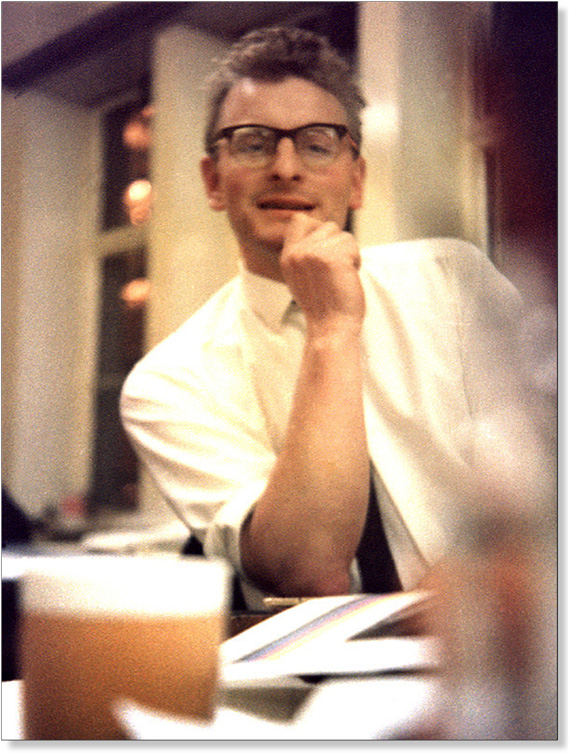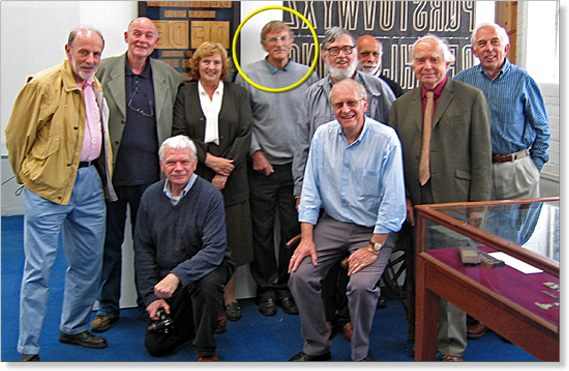
A recent exchange of Christmas cards has brought the news from Alan’s daughter that her father died on Christmas Eve 2020.
Alan joined HMSO in October 1959 in Works Division before transferring to Layout Section in Atlantic House, under John Westwood, working alongside David Napthine, Reg Vine, John Saville, Fred Stubbs and Peter Branfield. In 1970 he joined the Dept of Employment, then the Health & Safety Executive before finally going freelance.
Philip Marriage adds: Alan and I joined Layout Section (as it was then, later Graphic Design) around the same time in 1964 and I found him to be a very friendly and helpful colleague. His printing industry background made him particularly suited to designing the most complex and demanding projects like the massive Whitehall Plan and sumptuous books like Tudor & Jacobean Portraits for Roy Strong (not then knighted) at the National Portrait Gallery, with whom he built up a close working relationship over a number of years. These and several others of his titles were selected by the National Book League for their annual exhibition of the best British designed and printed books and for display at the Frankfurt Book Fair. He was then head-hunted by Bernard Ingham (later Margaret Thatcher’s chief press secretary) to join the Department of Employment’s information team so left HMSO in 1970. However, Alan continued to keep in touch with occasional trips to Norwich and joined with other ex HMSO designers on group visits to the St Bride Printing Library in 2001 and the Type Museum in 2004.

Alan was a keen sportsman and got us playing cricket at lunchtime down the centre of the studio high up in Atlantic House. We played with a plastic ball and a bat made of cardboard but if you hit it in the middle of the bat the ball could do some damage. One by one the plastic diffusers protecting the fluorescent tubes hanging above each designers desk were hit, damaged, dislodged and eventually came crashing down. I remember one came down as John Westwood was showing some distinguished visitor around the studio. Happy days!
Marie Challis adds: I was sorry to read this Philip, I liked Alan, as did David and I remember hearing about the cricket in the studio at lunchtimes from David. Good times were had by all I think in those days.
Vera Brice adds: Sad news indeed about Alan. I do remember him from meeting him at the Type Museum gathering but I think he’d probably been headhunted by Bernard Ingham and left for the Dept of Employment by the time I joined HMSO. His cricket legacy lived on because I do remember the lunchtime matches being played the length of the studio. Carefree days!
Ken Arnoldi adds: How strange, I was thinking of Alan a couple of days ago! I too found him very pleasant and agreeable. I recall that Alan had a penchant for broken biscuits and sometimes had a box of them (from the grocers on the opposite corner to Atlantic House) under his desk. Without stopping work or even thinking, his hand would reach under his desk and reach for another morsel. The last time I saw him was during our visit to the Type Museum.
Nodge Carnegie adds: Alan was my first not-quite-boss in Graphic Design (if you leave aside, for a moment, the “hierarchy” – Mr Westwood, David Napthine, and Reg Vine). Reg put me under Alan’s supervising “wing” from a week or so after my arrival (February 1970) until Alan’s departure for pastures new later in the year (November?). Needless to say, he taught me a lot about the day-to-day work of the studio and was patient, very kind, and encouraging with my early efforts. He was quiet and undemonstrative, with a quiet sense of humour – leaving the flashy stuff to David Challis and Len Lawrance, among others – and took time to give me gems of advice, design and layout related or otherwise. One has remained undimmed. This isn’t verbatim but conveys the message:
“If you happen to be working on something interesting – cover design or page-layout visuals – ALWAYS have within reach some bread-and-butter work, such as galley-proofs for checking or a press-ad for marking up. JW is in the habit of strolling around the studio, seeing what work is in hand. If anything catches his eye, he’ll want to ask you all about it. If he approaches, cover what you’re working on with the mark-up. He’s not interested in mark-ups.”
Alan made me laugh with a family anecdote which involved a visit to the in-laws for lunch. “My father-in-law noticed that next-door’s dog had wandered into the garden and was busily performing on the pansies. The father-in-law opened the window and shouted, “Hey! Stop that! Be off with you!” The dog just glared at him in an unfriendly way. So, my father-in-law just said, quietly, “Well, hurry up about it!” and closed the window.
During my first year in Norwich at the School of Art, learning to prepare silk-screen line images – and printing from the screens – opened up unimagined possibilities for my efforts. During the second and third years, an off-shoot was doing drawings using the same line-and-solids approach. This exploring of black and white images was helped by our having available a Grant Projector. It was a basic model, without the “photographic” possibilities of the Grant in HMSO’s GD studio.
One day, during my sift of my gradually-growing portfolio (all those mark-ups and van-streamer visuals), Alan came for a look. He took an interest in some of the black and white items from my Art School days. What came next was a revelation. Alan delved into a drawer and drew out a cover proof for one of his recent jobs. It was a very strong, striking black line image (simplified photographically from a grey, dull original, which he showed me) and printed on white board. The effect was almost like a wood-cut print. For me, the transformation of this image was Alan’s use of a second colour in one small area. It was so simple (if you knew how!) and very effective. It’s easy to forget how much such examples can be of benefit.
Best wishes (from one who benefitted greatly from working among so many talented designers). Nodge.

